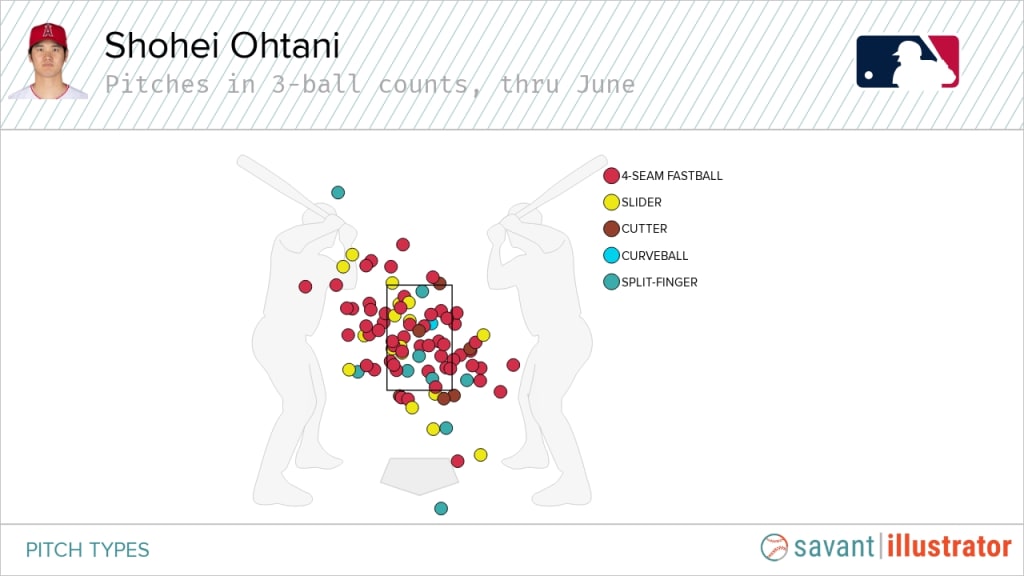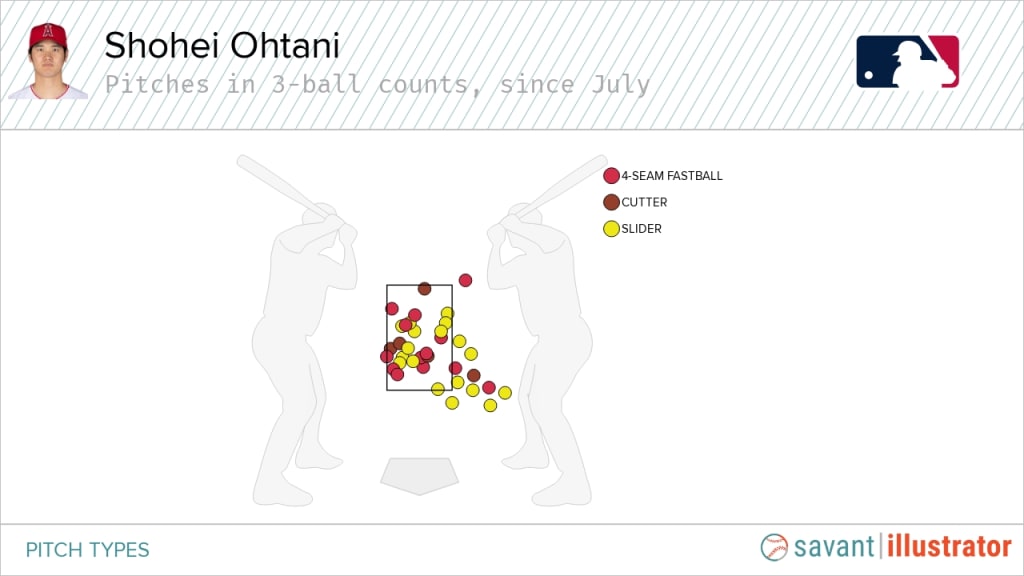As if Shohei Ohtani¡¯s season wasn¡¯t already incredible enough, with 40 homers at the plate and 18 starts on the mound entering Wednesday, he¡¯s been on a whole new level when pitching lately. On June 30 at Yankee Stadium, he had a tough outing -- allowing seven runs in just two-thirds of an inning. He walked four batters and hit one with a pitch, too. Even through that start, his season ERA was at 3.60. Good, and even better before that start, at 2.58, but not necessarily next level.
But since the calendar flipped to July, he¡¯s been a different pitcher. His 1.58 ERA in that span is the lowest in the Majors, with a minimum of five starts. That¡¯s right, 40 homers and he¡¯s been the best pitcher in baseball for a stretch. It¡¯s been said already, but it bears repeating: no disrespect to the past, but we are so far beyond Babe Ruth comparisons at this point.
Here are four reasons Ohtani is better than ever on the mound.
Mastering control, thus going deeper in games
Early in the season, walks were a problem for Ohtani, as was going deep in games -- and the two were related. He threw a lot of pitches and threw more than six innings in a game just once in his first 12 starts. In that time, he had a 13.6% walk rate, and walked four or more batters in five of his starts.
In the six starts he¡¯s made since July began, he¡¯s walked four batters ... total, with a microscopic 2.7% walk rate, tied for second-lowest in that span (min. 5 starts). And, in related news, after averaging five innings per start in his first 12 outings, a mark that is admittedly skewed a bit by the two-thirds-inning start on June 30, he¡¯s averaging 6 2/3 innings per start in his last six times on the mound. Keeping his pitch counts down early and limiting deep counts that lead to walks has allowed him to go deeper in games, not to mention increased his chances at productive starts.

What has changed: Increased slider usage, decreased four-seamer usage
So, how does one go from walking all of those batters to simply not doing so? The answer lies within some overall changes he¡¯s made. Let¡¯s investigate.
In his first 12 starts, Ohtani threw his four-seamer 53.2% of the time, splitter 19.3% of the time, and his slider 14.3% of the time, for his three most-used pitches, followed by his cutter (9.9%) and curve (3.3%). In his last six starts, he¡¯s eased off the four-seamer, at 41.1% instead, and increased the slider usage to 24.9%, cutter at 17.9%, split at 11.4% and curve at 4.7%. It made sense to up his slider usage: The pitch had a .243 opponent batting average when it ended a plate appearance, not that far off from his four-seamer (.234), and almost identical slugging percentage (.378 to .377). Why not mix it up more, stop using a pitch more than half the time like he had been, and keep hitters guessing?
The plan has worked. He¡¯s allowed just five hits in plate appearances ending on his slider in his last six starts. And this all brings up back to eliminating walks. How? Well, in his first 12 starts, he went to the four-seamer even more frequently in three-ball counts, at 62.9% of the time. And of course, fastballs are usually the go-to league-wide in such counts (64.2% for 4/2-seamers and sinkers). But in his last six starts, he¡¯s thrown a slider 50% of the time when he¡¯s been in a three-ball count.

The other thing he¡¯s done, and it sounds simple, but it¡¯s easier said than done, is locate those three-ball pitches. He threw in the zone just 46.1% of the time earlier in the season. Now, he¡¯s done that with 72.2% of three-ball pitches. Throwing more competitive pitches in those counts puts him in a much better spot.
What hasn¡¯t changed: His splitter is really good
He now has his slider being used more frequently and effectively in the non-four-seamer department, and that goes well with his nasty splitter. He¡¯s using the pitch less than earlier in the year, but it¡¯s been just as good. In fact, in 21 plate appearances ending on his splitter since July began, he¡¯s yet to allow a hit.
Overall for the year, Ohtani has allowed just an .075 batting average in at-bats ending on splitters, the lowest for any pitcher on any pitch type this year (min. 80 PA ending on pitch type). And he¡¯s induced a 53.7% whiff rate on swings against it, eighth-highest on a single pitch type (min. 100 swings at pitch type), up there with Jacob deGrom¡¯s slider and Craig Kimbrel¡¯s knuckle curve. In other words, great company, even if he is eighth, not first, on the list.
What¡¯s next
At this point, Ohtani seems to pretty much have AL MVP honors locked up, barring something unforeseen. He won¡¯t have the innings totals like Lance Lynn, Carlos Rod¨®n or Gerrit Cole, but it¡¯s worth starting to wonder if he could find himself in AL Cy Young contention if he continues to pitch this well.
The fewest innings by a Cy Young-winning starting pitcher in a non-strike or COVID-shortened season is 180 2/3 by Blake Snell in 2018, and that total seems out of reach. But at his current pace, Ohtani could end up a qualified pitcher (162 IP by end of year), something that didn¡¯t seem within reach even a month ago, and perhaps that could help his case.
Either way, he¡¯s been on a roll, and we are so lucky to be watching this season unfold.

